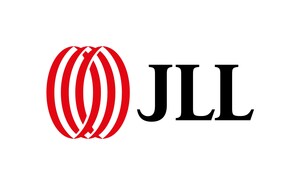CHICAGO, Sept. 28, 2021 /PRNewswire/ -- There has been a lot of speculation around when corporate America will "Return to the office" en masse. It isn't easy to peg a long-term trajectory for the office industry when the companies that occupy office buildings are making varied decisions along a spectrum of return dates. Some companies brought their people back last year, more came back post Labor Day, while some are taking a wait-and-see approach, for now.
While the Delta variant has pushed back decisions and added near-term uncertainty, JLL believes the office market will recover and remain a critical part of the workplace, and of investment portfolios.
"A physical office reinforces culture, drives collaboration and innovation, enables professional growth and brings a company's best to its clients and employees," said John Gates, JLL's Chief Executive Officer, Americas Markets.
Gates will join JLL CEO's Sanjay Rishi of Work Dynamics and Mark Gibson of Capital Markets to share insights into the U.S. office market recovery in the second half of 2021 on a public webinar Oct. 7. Media are encouraged to attend, and can register now.
The leading indicators of an office recovery have showed sustained upward momentum until Delta's recent dip. JLL's "comeback index" combines 12 indicators to provide a proprietary analysis on how close the country is on a return to "normalcy." It provides weekly snapshots that act as a guiding benchmark to help companies who occupy and invest in office real estate in their decision-making processes."
"Our comeback index, which tracks tangible data such as office entry badge swipe rates, leasing activity, lease term, TSA checkpoints, unemployment claims and more, showed that we hit a peak of activity and office usage in July. The index retracted a bit in the last two months," said Ben Breslau, JLL Chief Research Officer. "While we expect some additional short-term delays from Delta that could push another sustained wave of office recovery into the first quarter of 2022, we don't foresee a prolonged pause given the greater level of immunity through vaccinations and the momentum we see in other sectors."
Whether companies return to their offices now, or a bit later, their employees face challenges in remote work too.
JLL's Workforce Preferences Barometer that includes a survey of 3,000 office employees, identified remote work fatigue as one of the primary reasons many employees want to physically return to the office. More than 57% of working parents feel more exhausted by their workload and are experiencing burnout, more than 61% of employees miss "real" human interactions, and more than half of Gen Z workers feel under more pressure due to career growth opportunities in flux. The office provides a place for social interaction, engagement, learning, and team-building activities, which is more challenging to replicate with an entirely remote-workforce.
"There is no one-size-fits-all approach to how offices will operate now, and in the future," said Sanjay Rishi, Americas CEO, JLL Work Dynamics. "But what we do know is that companies must take into consideration worker preferences and adapt their models to include some flexible options while continuing to offer physical office space to cultivate company culture and provide a social, collaborative outlet for employees to thrive."
Most companies embraced mobility or flexibility ahead of the pandemic. For those that haven't, hybrid models are typically the starting point to return to the office, ahead of local guidelines allowing for full capacity.
While JLL believes that hybrid work models will have a durable presence post-pandemic, the big question is whether they will have a material impact on space usage and footprints. JLL's view is that in aggregate the initial impact will be relatively minor, but there will be demand variations across the board depending on location, employee amenities and potential new construction. There are initial signs of demand improvement to support that thesis. Leasing volume increased yet again in the third quarter by 7.8% from Q2 to 39.2 million square feet. Additionally, leading indicators such as lengthening lease terms, demonstrate some confidence in the market and tenant intentions to use office space long term. In the third quarter, leases of at least 5 years in length accounted for nearly 70% of all activity and 43 percent of leases were at least 10 years in term.
Lastly, it's not surprising that health and wellness will continue to be of utmost importance as employees re-enter workplaces this fall. JLL's Workforce Preferences Barometer found that work-life balance is now the number one workforce priority and 73 percent of workers want to work from places that offer a safe healthy lifestyle coupled with human connection.
"I like to think the pandemic gave us valuable insight into how to reshape our offices for a more sustainable, healthier world," Breslau added. "We can all agree that health is our top priority and bringing that focus into office space, where many spend a majority of their day, is a smart move."
About JLL
JLL (NYSE: JLL) is a leading professional services firm that specializes in real estate and investment management. JLL shapes the future of real estate for a better world by using the most advanced technology to create rewarding opportunities, amazing spaces and sustainable real estate solutions for our clients, our people and our communities. JLL is a Fortune 500 company with annual revenue of $16.6 billion, operations in over 80 countries and a global workforce of more than 91,000 as of March 31, 2021. JLL is the brand name, and a registered trademark, of Jones Lang LaSalle Incorporated. For further information, visit jll.com.
Connect with us
https://www.linkedin.com/company/jll
https://www.facebook.com/jll
https://twitter.com/jll
https://www.instagram.com/jll
Contact: Jesse Tron
Phone: +1 212 376 1215
Email: [email protected]
SOURCE JLL

Related Links
WANT YOUR COMPANY'S NEWS FEATURED ON PRNEWSWIRE.COM?
Newsrooms &
Influencers
Digital Media
Outlets
Journalists
Opted In






Share this article